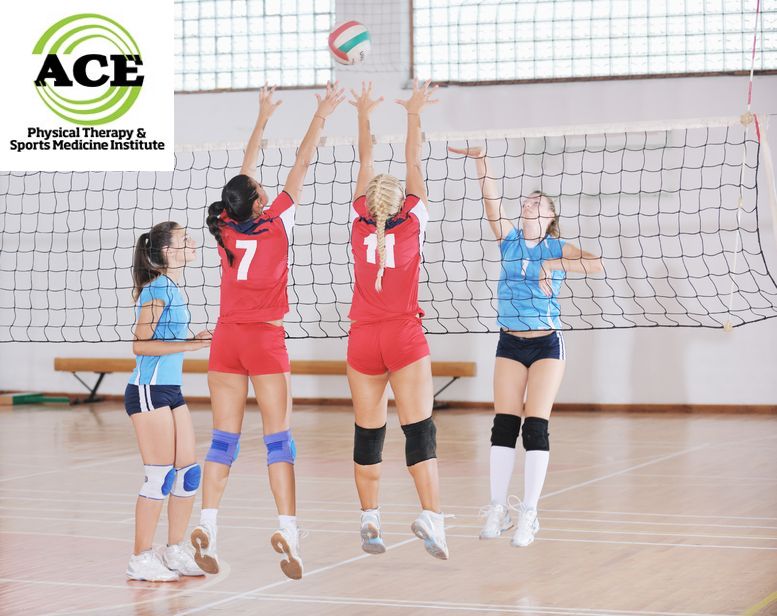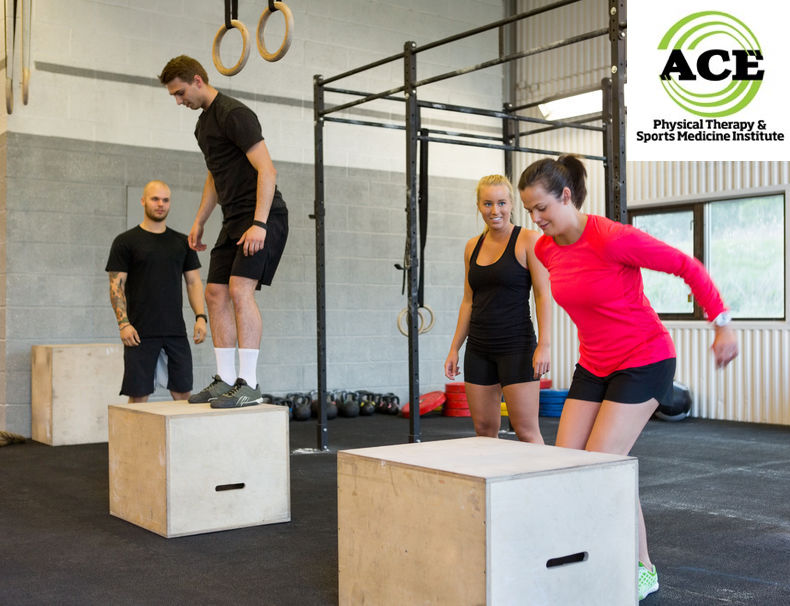ASSESSING ANTERIOR CRUCIATE LIGAMENT (ACL) INJURY RISK

Tid Bits of Info
- Landing with hyperextended or “knock knees” predisposes a person to an ACL injury.
- Strength development in the hips can help eliminate / control the “knock knee” position that can occur when someone lands.
- Many ACL injuries occur when the person is attempting to decelerate and stop their motion.
- Re-injury to the ACL is more common in people under 25 yo and a thorough rehab program including strong emphasis on neuromuscular control can help to prevent re-injury.
- Seek the advice and treatment of a Physical Therapist if you suspect that you might be prone to an ACL injury.
“On the field” or “in the clinic” injury risk testing should be considered a necessary and standard part of an athlete’s preparation for a particular sport. This could help identify athletes who are more susceptible to an injury due to an anatomical or physiological condition. Once a specific issue is detected, Physical Therapists, personal trainers and athletic trainers can develop a focused training programs designed to help avoid injury. Exercise would prepare athlete for the various stresses and strains that occur while participating in a particular sport or event.
Many recent studies attempt to predict who is more susceptible to an Anterior Cruciate Ligament (ACL) injury or re-injury. The assessment processes consist of different jumping tests. Triple hop, vertical drop and standing broad jump are used to gather data. The quality of the jump/ landing technique and the total distance are used to predict future ACL injuries.
The tests used are functional jump/hop tests and they are used to assess the strength, neuromuscular efficiency and joint stability in a particular lower extremity. The assumption in the healthcare world is that a lower extremity that is strong, stable and has good neuromuscular control is significantly less likely to be injured during competition/physical activity. These tests can be used to predict future injuries in the lower extremity in many instances.
The test results will identify gross weakness and lack of muscular endurance. The healthcare professional that administers the tests must observe the quality of motion and the control of the total motion throughout the lower extremity to assess the neuromuscular status of the tested leg.
Triple hop, vertical drop and single leg broad jump tests are easily administered anywhere and can quickly assess the quality of neuromuscular control, gross core and lower extremity strength and an athlete’s confidence level to land on an involved lower extremity. Not surprisingly the results correlated well with common sense. If the participant was reluctant to land equally on both legs, produced less distance with the involved limb, or demonstrated poor control of their lower extremity during the testing process, they were labeled as an “at risk” participant. The “label” enabled the participant to get “special” attention from the healthcare team and they were required to perform a routine that incorporated drills and exercises that would help them develop the necessary strength and neuromuscular control to avoid injury/re-injury.

Physical Therapists who specialize in orthopaedics can test an individual for their risk of lower extremity injuries. Based on the results of the tests, they can design an exercise program that will enhance an individual’s chances of avoiding a lower extremity injury. They need to work with the individual initially because the participant must be educated in the proper technique of jumping and landing. The use of the entire lower extremity musculature during the landing phase can reduce the amount of stress and strain on the joints of that leg. Maintaining the leg in proper alignment during the jump and land sequence reduces the forces on the joints, also.
Pre-season assessment and screening previously injured participants utilizing simple clinical assessment tools should be the standard and not the exception. Healthcare professionals, coaches and parents should encourage this process in the hopes of eliminating devastating lower extremity injuries that can end the participation in a particular sport or event of the injured athlete.

























This article states that preventative measures are always more influential and more beneficial than treatment of an injury after it happens. ACL tear or injury is one of the most prevalent sport-related injuries. The number of people who go through the surgical procedure of ACL repair and the amount of money being spent on surgery, hospitalization, patient care, rehabilitation process and medications is outstanding. Both healthcare system and athletes would benefit from such screening tests and prevention techniques that result in less money and resource expenditure and gaining optimal function without experiencing the physical and financial burden of an injury such as ACL tear. This article talks about one of the many ways that we could save money in our healthcare system. I wish there were better solutions rather than changing the whole healthcare system without gaining anything more and losing the existing coverage for a huge number of people in this country.
This article is great for athletes to view and understand not only the mechanics of their injury but the importance of PT and to regain strength post ACL injury. Athletes are also at higher risk down the road post ACL to have an increase in articular joint pressure causing arthritic changes in the joint. It is important if athletes are having any sort of knee pain or feel their knee not quite moving right to get checked out by their MD or PT to see ligaments support prior to injury to strengthen the joint and allow surrounding structures to protect the joint and decrease stress on the joint with muscular support.
Enjoyed this article, especially since recovery time of ACL repair is lengthy. Prevention is the way to go! The picture of box jumps is appealing, especially given its high use in functional fitness, showing a box jump executed with flat back, lifted chest, full foot landings and proper foot alignment. It would be helpful if the picture also showed an individual who followed through the entire range to full hip extension for this exercise to be beneficial since this is often neglected. Descent from higher boxes should be cautioned since achilles injury-a whole other issue-can occur with backward jumps.
Great article. I doubt that many young athletes know that if they undergo reconstruction surgery they are more susceptible to degenerative changes in the future. By educating the athletes and treating any discrepancies that may lead to injury before it occurs, we can help to decrease future impairment, medical costs and increase quality of life.
This is a great post. I think this is the way sports “training/preparation” should be moving, in order to reduce the rate of injuries, along with having health professionals as an integral part of the team. I don’t think there should be total team warm up and drills – rather in the preseason and off season training, athletes should be placed into different groups based upon their deficits. I see that being very beneficial for sports teams.
With the functional ACL tests, I would be curious to see how tiring out the athlete before performing these tests would effect their performance. I know there is a link to fatigue and ACL injuries. Would it be more beneficial to tire them out to see how their mechanics change when they are fatigued?